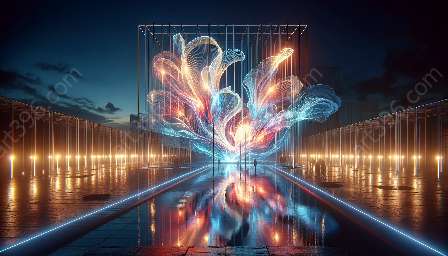Light is an essential element of our visual experience, but its potential as a tool for artistic expression goes far beyond basic illumination. The use of light in art has transcended traditional boundaries, giving rise to innovative forms such as light graffiti art and light art.
Possibilities of Using Light as a Tool for Artistic Expression:
1. Creativity Unleashed: Light offers artists a wide range of creative possibilities. It can be manipulated, shaped, and colored to create mesmerizing visual displays that captivate audiences.
2. Dynamic Art Forms: Light art and light graffiti art are dynamic art forms that can transform ordinary spaces into immersive, interactive environments. With light, artists can breathe life into static objects and spaces, creating a sense of movement and transformation.
3. Environmental Influence: By harnessing natural light or using artificial sources, artists can integrate their creations seamlessly into the environment, blurring the line between art and nature.
4. Emotional Impact: Light has the innate ability to evoke emotions and create mood. Artists can utilize this quality to convey powerful messages and tell compelling stories through their light-based artworks.
Limitations of Using Light as a Tool for Artistic Expression:
1. Technical Challenges: Working with light requires a deep understanding of its properties, including reflections, refractions, and color temperatures. Artists must grapple with technical limitations to achieve their desired artistic outcomes.
2. Transient Nature: Light, especially in the form of light graffiti art, is often fleeting. It requires precise timing and execution, as well as an acceptance of its ephemeral nature.
3. Energy Consumption: Producing elaborate light-based artworks may consume significant amounts of energy, posing environmental and cost-related challenges.
4. Accessibility: The materials and technology required for creating light art may not be readily accessible to all artists, limiting the democratization of this art form.
Impact on the Artistic World:
Light art and light graffiti art have revolutionized the artistic landscape, offering a contemporary and dynamic medium for self-expression and engagement. These art forms have extended the boundaries of traditional art, inviting audiences to participate actively in the creation and experience of art.
In conclusion, the use of light as a tool for artistic expression opens up a world of creative possibilities while also presenting various challenges. As technologies continue to evolve, we can expect light-based art to push the boundaries of imagination and offer new ways to engage with and interpret the world around us.

